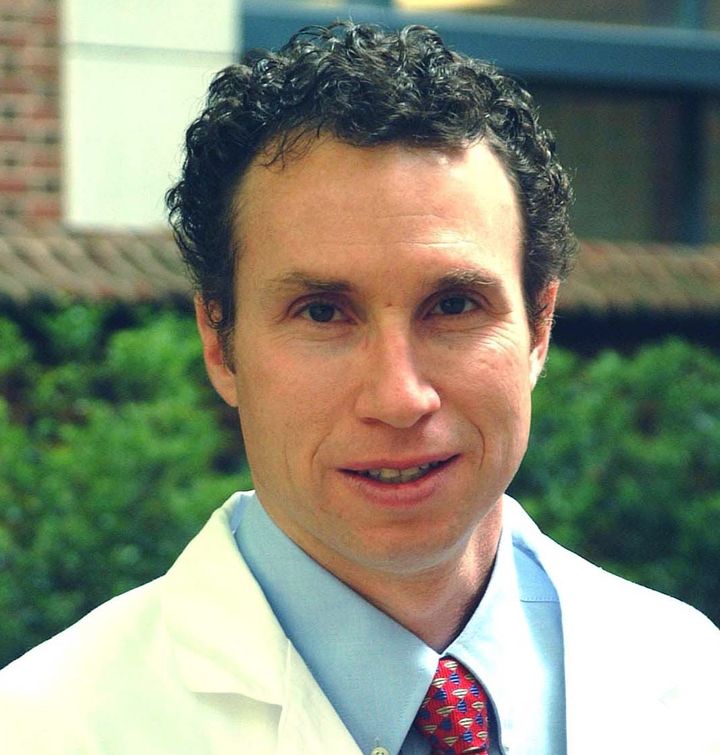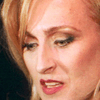
ANDREW B. NEWBERG
The Templeton-funded Imagination Institute is not messing around in its mission to develop an “imagination quotient.” It has awarded neuroscientist Andrew Newberg---widely known for his studies of the brain during meditation---$100,000 to “evaluate brain changes related to creativity in advanced thinkers and geniuses.”
Dr. Newberg is currently a physician in Philadelphia at Thomas Jefferson Hospital’s Department of Emergency Medicine and Radiology and associate director of research at Marcus Institute of Integrative Health, Thomas Jefferson Hospital. He is also a professor of emergency medicine and radiology at Thomas Jefferson University and Hospital as well as an adjunct professor in the Department of Psychology at the University of Pennsylvania’s School of Arts and Sciences. His current research at Thomas Jefferson University and Hospital involves brain imaging in assessing various brain and behavioral disorders.
Newberg is the author of six books, among them: Words Can Change Your Brain (with Mark Waldman), Why We Believe What We Believe (with Mark Waldman), and The Mystical Mind (with Eugene d’Aquili); roughly 200 scientific papers; and serves as a reviewer for nearly two dozen scientific journals, such as: Brain and Cognition; Journal of Nuclear Medicine, Journal of the American Medical Association, European Journal of Nuclear Medicine, Alternative Therapies in Health and Medicine.
He is certified in both internal and nuclear medicine. His MD is from the University of Pennsylvania’s School of Medicine, and his BA in chemistry from Haverford College (the alma mater of antiquities legend Bob Hecht).
Some of Andrew Newberg’s honors include: Top Doctors in Nuclear Medicine (2017); Teacher of the Year Award (2017, University of Pennsylvania); 30 Most Influential Neuroscientists Alive Today (2016, Online Psychology Degree Guide); Living Now Book Awards Gold Medal Winner (2016); Teacher of the Year Award (2010, University of Pennsylvania); Gold Medal for Intellectual Curiosity (1998, Institute for Patient Advocacy).
In the interview that follows, Andrew Newberg and I discuss his current Imagination Institute project as well as just how far back evidence actually exists for religion.
Suzan Mazur: You’re widely known for your neurotheology studies, but your Imagination Institute grant is for investigating “the anatomical correlates related to creative thinking.” It’s not about religion, correct?
Andrew Newberg: That’s correct, it is not about religion.
Suzan Mazur: I’d like to start with a question about the brain and religion, however.
Andrew Newberg: Sure.
Suzan Mazur: What is your understanding of when, historically, humans thought up religion? British anthropologist Maurice Bloch has said humans largely live in their reflective imagination, something that first arose 40,000 to 50,000 years ago and that “[t]he kind of phenomena that the English word “religion,” and the associated word “belief,” can be made to evoke have, at most a history of five thousand years.” You’ve said religious and spiritual ideas have been around “since the dawn of civilization.” When would that be---“the dawn of civilization”? And what is the evidence?
Andrew Newberg: Certainly, a more formalized aspect of religion has been around for about 5,000 years going back to the Egyptian dynasties. There is evidence before that in the tablets of Sumeria, [circa 3,300 bc]. There was a discovery in recent years at Göbekli Tepe in Turkey of 11,500-year-old stelae inscribed with animal images.
Suzan Mazur: I’ve written extensively about ancient Anatolian art and archaeology, and recently interviewed Ian Hodder, director of the Çatalhöyük project in Turkey. Hodder told me there was religion there on the Konya plain at 9,500-year-old Çatal because he’s found little evidence of fractured skulls, and the ancient inhabitants appear to have swept out their houses. Hodder has described the stelae at Göbekli Tepe as “a scary, fantastic world of nasty-looking beasts.”
Regarding Göbekli Tepe, in the late 1980s I interviewed Gerardo Reichel-Dolmatoff--- the preeminent expert on Colombia’s pre-Hispanic past---who after drinking six cups of yajé with the Barasana Amazonians was convinced that their art was drug-induced. Reichel-Dolmatoff also argued, based on his excavations in southwest Colombia at San Agustin that the fierce “jaguar” statuary there did not represent a memorial site but was part of a settlement inhabited by a succession of societies and that the statues were sculpted by its inhabitants while in drug-induced trances.
“There is no mystery about it, he said, “the Indians had lots of plants to induce ecstasy.”
Having explored the San Agustin area, I tend to agree with Reichel-Dolmatoff about such art being psychedelic. The part of Turkey you’re referring to has a long wild poppy history, wild berries, mushrooms and other types of hallucinogens. I think the euphoric wall paintings at Çatalhöyük and “scary”stelae at Göbekli Tepe further support Reichel-Dolmatoff’s perspective.
The problem with branding these ancient sites “religious” is that---as Mary Leakey once told me during a chat at Olduvai---we don’t have soft tissue to tell us what the ancient human scenario really was, what was going on in the brain. So, the religious angle is speculation earlier than 5,000 or so years ago. We don’t have an intact 10,000 or 11,000-year-old brain to do an MRI. Ian Hodder said scientists haven’t even been successful with Çatal skeletal DNA analysis.
Andrew Newberg: I think the first evidence of a belief system comes out of Egypt and Mesopotamia, but I haven’t actually seen a whole lot of brain microscopic studies of people who’ve been mummified. Just looking online while we’re speaking---there was an MRI done of a 3,200-year-old Egyptian mummy brain that showed the basic folds. Part of the problem is you don’t know if you’re looking at the death process---this is, what the brain looked like when it was dead versus what the brain looked like when it was alive. It’s tough to interpret.
Suzan Mazur: In my recent conversation with Paul Silvia, who’s been funded by the Imagination Institute to study how creative ideas are generated—Silvia reports that it’s not enough to look at brain areas because the story is the networks of networks. You’re looking to the anatomical correlates. Would you say more? What are some of your exciting results so far?
Andrew Newberg: No results so far. We’re still collecting data on a few more people. Typically, we have to then analyze all the data. We’ve looked at a few individual scans and noticed some things that seem interesting, which, if they hold, can be very exciting.
We’ve found at least in a couple of the people we’ve studied a greater level of connectivity between the left and right hemispheres of the brain. That would certainly make some sense. As you just mentioned, there’s a lot of networking going on, a lot of interconnectivity of different parts of the brain. With more connectivity, more creativity may be possible. At the moment, however, that’s a very preliminary assessment.
What I can say is that we’re investigating a variety of aspects of the brain’s parameters. We’re looking at structure, at whether there are certain structural changes that may be associated with creativity. And we’re looking at those people who appear to be more creative than others. We’re studying what’s called functional connectivity---how different parts of the brain are connected to each other, the networking concept. We’re also looking at structural connectivity, another way of looking at those networks. And we’re observing the brain while participants are doing creative tasks. We’re hoping to see whether there are several or multiple areas of the brain involved in that type of processing as well.
Suzan Mazur: You’re doing this largely through MRI?
Andrew Newberg: Yes.
Suzan Mazur: There have been some problems with MRI. Would you address that?
Andrew Newberg: There’ve been some issues raised about how scans are processed that may have affected thousands of studies but we’re not involved with that particular software so it’s not really an issue for us. Whenever you’re doing any study, there are challenges in terms of what a person is doing and thinking, and are they doing it in the way that they usually do it. We put people through a creativity task, but it’s a specific task and not the way that they normally think creatively in terms of solving problems in their everyday lives or in the fields of scholarship they’re particularly involved in.
Suzan Mazur: When will your study conclude?
Andrew Newberg: Recruitment is at the end this month. We’ll begin analysis at that point. There’s going to be a lot of data, so several months of data analysis will follow. I’m guessing papers will be ready for publication toward the end of this year.
Suzan Mazur: Are your subjects in the current study all right-handed?
Andrew Newberg: No, not all of them are right-handed and that, in and of itself is an interesting issue. We decided not to specifically exclude people for handedness.
When we do the analysis, obviously, we’ll have to look at who is left-handed and who is right-handed. Hopefully, we’ll have a sufficient number to be able to say something about that.
Suzan Mazur: How are you handling the handedness factor---individually or on a group basis? Because left-handers exhibit more brain laterality.
Andrew Newberg: We’ll be sorting the data based on a variety of variables including age, gender, handedness, etc., and we’ll see if there are any corresponding findings that are interacting with those variables. It also depends on whether we have sufficient numbers in each of those categories. If we only have a few left-handed people, we’re not going to be able to say very much and we’ll have to make some decision about whether or not that data can be included or excluded. If there’s a pretty even number of right and left-handed, we can analyze the two groups together and see what turns up. We can also separate them and see what distinctions there are between left-handed and right-handed participants in terms of creativity.
But, I agree, at the moment neuroscience research is not set up for individual variation and individual analysis. So we’ll try to find ways to work around that. We’ll certainly be looking to see if there are any unique elements or features of these individuals and if that is something that holds for the other people in the group.
Suzan Mazur: But handedness apparently goes beyond Homo sapiens. Chimpanzees exhibit left and right-handedness, etc. So the human as well as the animal studies are flawed.
Andrew Newberg: I wouldn’t characterize them as flawed. But they are limited in terms of their ability to extrapolate for the entire population.
Suzan Mazur: One billion left-handed people, more or less, are largely excluded from cognitive neuroscience studies, 10%-15% of the human population. We don’t know the extent of handedness in animals. Flawed is certainly the term used by Roel Willems at Max Planck and Donders Institute for Brain, Cognition and Behavior.
Andrew Newberg: The problem with every study is that people are excluded for one reason or another---age, gender, handedness, intelligence, people who are on medication, people who are off medication, people with medical problems, people who don’t have medical problems, child-only, adult-only. There are a million factors to consider. The more broadly you include, the more broadly you can extrapolate. The more narrowly you include, the more narrowly you can extrapolate---but sometimes the more specific you can be in terms of results. There’s no perfect study.
Suzan Mazur: But you think there should be more inclusion of left-handers in these studies.
Andrew Newberg: I think so. Again, I think it’s something where you have to think it through in terms of the specifics of what’s being evaluated. If you’re doing a study that’s heavily focused on language, then you may have no choice but to select right-handed people to guarantee that you’re seeing the left hemisphere, whereas if you’re looking for a disease like Alzheimer’s, choosing right or left-handed subjects would mean very little. Again, with creativity we don’t know. Obviously, left-handed people are very highly creative, every bit more---if not more creative---than right-handed. That may be part of what we want to look at, the hemispheres.
